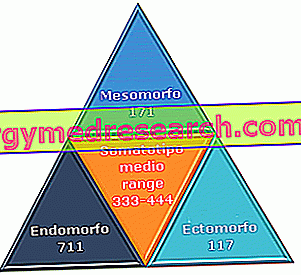Generality
Pyoderma gangrenosum is a dermatological disease characterized by the recurrent appearance of large skin ulcers .

The cause of pyoderma gangrenosum is not known, but this condition is frequently associated with systemic diseases, such as rheumatoid arthritis, hepatitis C, chronic inflammation of the intestine and malignant tumors. Onset of the disease is characterized by the appearance of small bumps or blisters that turn into one or more open, painful ulcers surrounded by erythema.
The diagnosis of pyoderma gangrenosum is based on the typical clinical picture and on the exclusion of other diseases that can occur in a similar way.
Regarding treatment, the most reliable options for controlling the symptoms of pyoderma gangrenosum are represented by systemic corticosteroids and cyclosporine.
What's this
Pioderma Gangrenoso: what is it?
Pyoderma gangrenosum is a chronically evolving skin disease, often associated with systemic diseases.
The etiology of this condition is unknown, but probably depends on an abnormal immune-mediated response.
Pyoderma gangrenosum is characterized by recurrent skin ulcers and phenomena of skin necrosis.
Causes and Risk Factors
Pioderma Gangrenoso: what is it caused by?
At present, the etiology of pyoderma gangrenosum has not yet been determined exactly. The pathological process appears to be supported by chronic inflammation mediated by an abnormal immune response, in which the immune system reacts against the skin itself.
Contrary to numerous other skin conditions in which lymphocytes and / or antibodies intervene, it has been observed that in the pyoderma gangrenosum neutrophils are also implicated and at the origin of the dysfunctional reaction of the immune system, there may be some alterations of their chemotaxis.
In support of the hypothesis that the disease is immune-mediated, over-expression of many mediators, including IL-8, TNF and interferon-γ, has been reported in patients with pyoderma gangrenosum.
A characteristic of the pyoderma gangrenosum is patergia, that is the appearance of new lesions, at the sites of trauma, due to the excessive reactivity of the skin to common and normally harmless stimuli.
Possible disorders associated with Pioderma Gangrenoso
In about 50% of cases, the pyoderma gangrenosum is found in associations with basic systemic diseases, such as:
- Rheumatoid arthritis;
- Hepatitis;
- vasculitis;
- Leukemia;
- lymphoma;
- Multiple myeloma;
- Systemic lupus erythematosus;
- Sarcoidosis;
- Behçet's disease;
- Hidradenitis suppurativa.
Furthermore, pyoderma gangrenosum can arise as a complication in different pathological conditions.
For example, skin disease can be observed in relation to some inflammatory bowel diseases (about 1-2% of cases), including:
- Ulcerative colitis;
- Crohn's disease.
Pyoderma gangrenosum can be associated with acne conglobata, a particularly serious condition characterized by the evolution of comedones in abscesses that heal leaving evident atrophic and keloid scars, often disfiguring. Rarely, the pyoderma gangreno begins after a heart surgery .
Who is most affected?
The greatest incidence of pyoderma gangrenosum occurs in subjects aged between 20 and 50 years . Females are more affected than males.
Pioderma Gangrenoso: aggravating and predisposing factors
- In about 30% of cases, ulcerations of the pyoderma gangrenosum occur after trauma or injury to the skin (patergia).
- Pyoderma gangrenosum can also develop on skin areas affected by surgical treatments . Therefore, if a biopsy is performed (a skin sample is taken for histological examination) or a debridement (removal of devitalized tissue to clean the area affected by the ulcers) the areas affected by pyoderma gangrenosum often undergo a deterioration.
Symptoms and Complications
Pioderma Gangrenoso: how does it start?
In most cases, the pyoderma gangrenosum begins with a small reddened bump, similar to an insect bite or a pimple. Less often, the first sign of the pathology is a bladder .
The initial lesion of the pyoderma gangrenosum progresses rapidly in an open, very painful ulcer, which tends to expand.
The clinical course of pyoderma gangrenosum may be chronic or recurrent.
Characteristics of skin ulcers
The skin ulcers of pyoderma gangrenosum:
- They can have variable width and depth;
- They have an edematous necrotic base and a detected peripheral margin of erythemato-violet color (ie dark red, violet or bluish);
- They are associated with a hemorrhagic or muco-purulent exudate;
- They expand rapidly and can flow together, thus joining together to form larger ulcers;
- They often leave cribriform or reticulated scars after healing.

Pioderma Gangrenoso: what other symptoms does it involve?
Pyoderma gangrenosum can lead to systemic symptoms, such as:
- arthralgia;
- Temperature;
- Feeling of general malaise.
Pioderma Gangrenoso: which venues are involved?
- The pyoderma gangrenosum occurs mostly in the skin . The most affected sites are the lower limbs and the trunk .
- Sometimes, other parts of the body and mucous membranes may also be affected. In particular, the pyoderma gangrenosum may occur at the level of the genitals ( pyoderma gangrenosum genitalis ) or at sites other than the skin, such as bones, lungs, muscles, cornea, heart, intestine, liver or central nervous system ( extra-cutaneous pyoderma ).
- As anticipated, the disease can affect quite characteristically the areas on which surgical operations are performed. In subjects suffering from inflammatory bowel disease, for example, ulcers can develop around the orifice of a colostomy or an ileostomy at the level of the abdominal wall ( pyoderma peristomal ganglenous ).
Variants of Pioderma Gangrenoso
The symptoms may vary depending on the different subtypes of the pyoderma gangrenosum:
- Pyoderma ulcerative gangrenosum (classic subtype): it is the most common form; ulcers develop as described above, more frequently in the lower extremities, trunk, buttocks and perineum.
- Pyoderma gangrenosum bullous (atypical subtype): it is an uncommon variant, which often develops in patients with haematological disorders. In general, lesions begin as erosive bubbles that evolve into superficial ulcers. Bullous gangrenous pyoderma mainly involves face and arms.
- Pustular gangrenous pyoderma : this subtype is characterized by the development of painful pustules, surrounded by erythema, which tend to form during exacerbations of inflammatory bowel diseases.
- Vegetative pyoderma gangrenosum : a single little painful plaque or superficial ulcer develops, mainly on the head or on the neck. The edge is clean and the base is not necrotic.
Diagnosis
The diagnosis is mainly formulated with the clinical evaluation, observing the appearance of skin ulcers, and the exclusion of other diseases that could mimic the symptoms of pyoderma gangrenosum, such as:
- Aphthous stomatitis;
- Churg-Strauss syndrome;
- Herpes simplex;
- Behçet's disease;
- Impetigo.
As mentioned above, if the ulcers get worse following their debridement, the diagnosis of pyoderma gangrenosum is highly probable.
Pioderma Gangrenoso: which exams are necessary?
In some cases, it may be necessary to biopsy a skin sample to examine it under a microscope and characterize it from a histopathological point of view, even if this procedure could temporarily worsen the problem, favoring the expansion of ulceration. Often, biopsies of lesions of the pyoderma gangrenosum are not diagnostic, but may be of support to highlight signs of vasculitis with neutrophil infiltrate and fibrin in superficial vessels.
Treatment
The treatment of pyoderma gangrenosum includes several useful strategies to promote ulcer healing and modulate the autoimmune reaction .
Generally, surgical treatment is avoided, such as debridement (or debridement), as it may aggravate the skin signs associated with the disease.

Treatment of skin lesions
The management of pyoderma gangrenosum ulcers involves the application of medications on the skin to retain moisture and prevent the skin from drying out, leaving deep scars.
Usually, we use:
- Occlusive bandages for lesions with less exudate;
- Absorbent bandages for wounds with abundant exudate.
On early (onset) and superficial ulcers, corticosteroid- based (anti-inflammatory) or tacrolimus (immunosuppressant) creams can be applied directly.
Skin transplants and the application of synthetic grafts can reduce pain and the risk of secondary infections.
Systemic drug therapies
If the manifestations of pyoderma gangrenosum are more serious, the most common first-line therapy involves the administration of prednisone orally .
Sometimes, drugs that suppress the immune system can be prescribed. TNF-alpha inhibitors (tumor necrosis factor alpha), such as infliximab, adalimumab and etanercept, are especially effective in patients with a concomitant inflammatory bowel disease .
In subjects in which pyoderma gangrenosum progresses rapidly, cyclosporine can be very effective.



